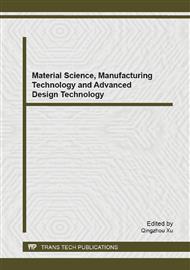p.262
p.269
p.277
p.282
p.287
p.292
p.296
p.302
p.306
Study on Distributed Intelligent Control Model of the Ships Pipe Network
Abstract:
A MAS-based distributed intelligent pipeline leakage control model, ship pipe network through the intelligent valve control system for automatic, independent isolate damaged sections, thereby enhancing ship in wartime circumstances viability. According to distributed intelligent control pipe network model composed of properties, the Agent is divided into sensor Agent, processors and actuators Agent. Agent of the processor by the sensor data collected Agent independent judgment pipe segment status judgment method and control rules proposed intelligent valve leakage indicator to determine the logic of the other characteristic parameters for a comparative study. Pipeline leakage numerical simulation results show that: the model and control logic to isolate leakage pipe sections, using the model can improve the vitality of ship pipe network.
Info:
Periodical:
Pages:
287-291
Citation:
Online since:
March 2014
Authors:
Price:
Сopyright:
© 2014 Trans Tech Publications Ltd. All Rights Reserved
Share:
Citation:


